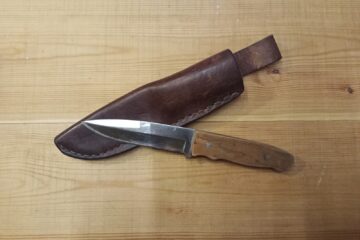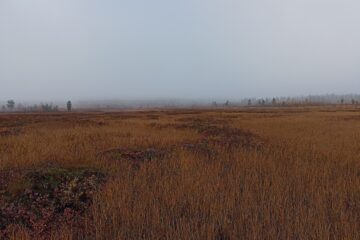Most Finns know already very good how to cross an open river or creek. But in a German outdoor forum there was a thread with quaint suggestions what you need to do for it. A lot of people there seem to use crocs, sandals or surf shoes. They are not only unnecessary, they are also dangerous as you should always have full control over the sole and the step when crossing running water. The chance of falling into the water with everything is much higher. When the current takes you it gets really dangerous!
Some people even said, that they don’t mind when their hiking shoes are completely wet. Then they do not need to take care any more. You could also say then: Just burn your stuff, then nothing can brake anymore.
As you never know in a forum it could be that they just do easy and short summer tours with good, sunny weather. Then things are more easy. But latest when you have frost you have a real problem when your shoes are soaking wet.
Keeping the shoes always as dry as possible is one of the most important things.
The disadvantages of wet shoes are a lot:
- Worse control as the shoe moves more easily on the feet. You need to tie it very strong which leads to bad blood circulation.
- High growth of bacteria and fungus.
- Cold feet.
- Soft wet skin leading to injuries from ripping.
- Wounds and even intact skin infects easily.
- Bad healing of wounds.
- When you get frost it can be that you can’t put your shoe on in the morning.
- Additional weight of the water.
- Shoes brake more easily.
- People try to dry them at the fire and normally burn them by that.
- …
Method 1: the simple way
Just take off your trousers, socks and shoes and walk barefoot through the water. This is always a good solution. You minimize the risk of making any equipment wet. You have a great feel for where you step and also the bare feet gets a good traction on the ground. Some people say that you can injure yourself, but actually I do not know how. Stones in running water are always ground and the chance of getting an injury is very low. I guided all kind of people through creeks and rivers and never anyone got an injury from it. If you are afraid of an injury it is better to use Method 2 or 3 instead of carrying and wearing some sandals or other stuff.
After you went through the cold water your feet normally warm up very fast because of the triggered increased blood circulation.
There is one disadvantage: The psychological part. Because the moment of going through the water is mostly very unpleasant, and undressing also, it can happen that you start planning routes to avoid crossings.
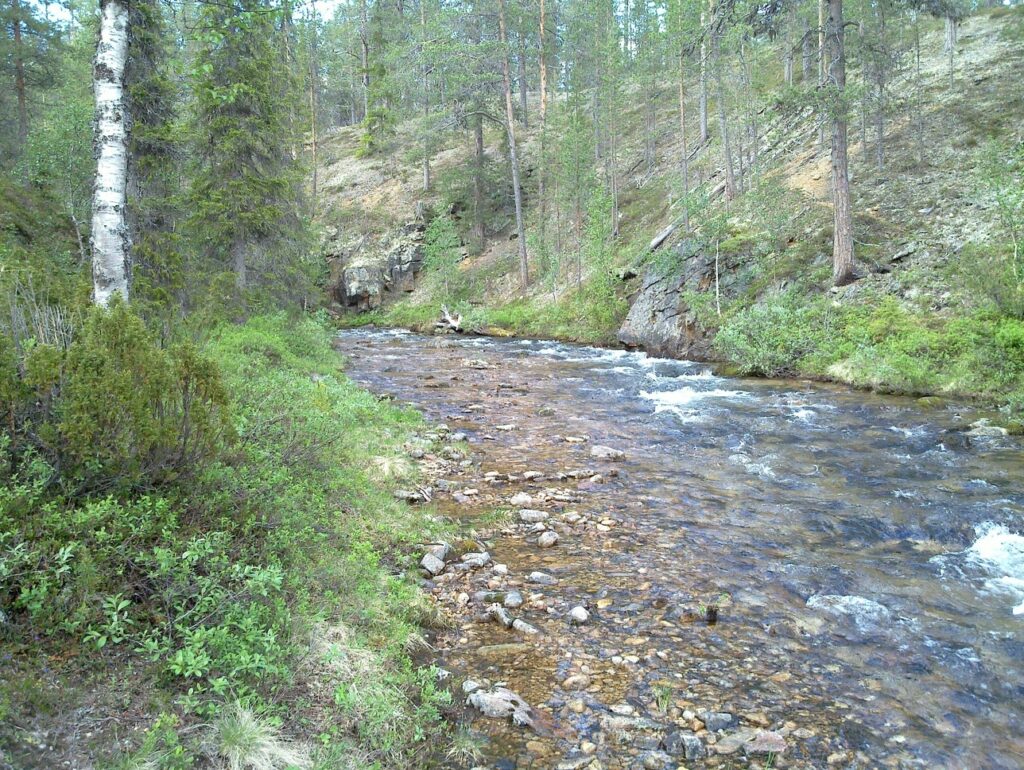
Method 2: tie chaps around your shoes
An efficient and warm method is to have a pair of watertight chaps (weight <200g) and two straps (weight <50g). You can tie the straps very strong around your watertight shoes and walk through running water without getting wet. The watertight shoes need to be high enough that you can overlap the chaps and the shaft easily. As an estimation the shoe should have two additional metal rows for lacing on the shaft. This method works very good but needs to be done accurate. I never got any remarkable amount of water inside. I show in the following image series how to do it.
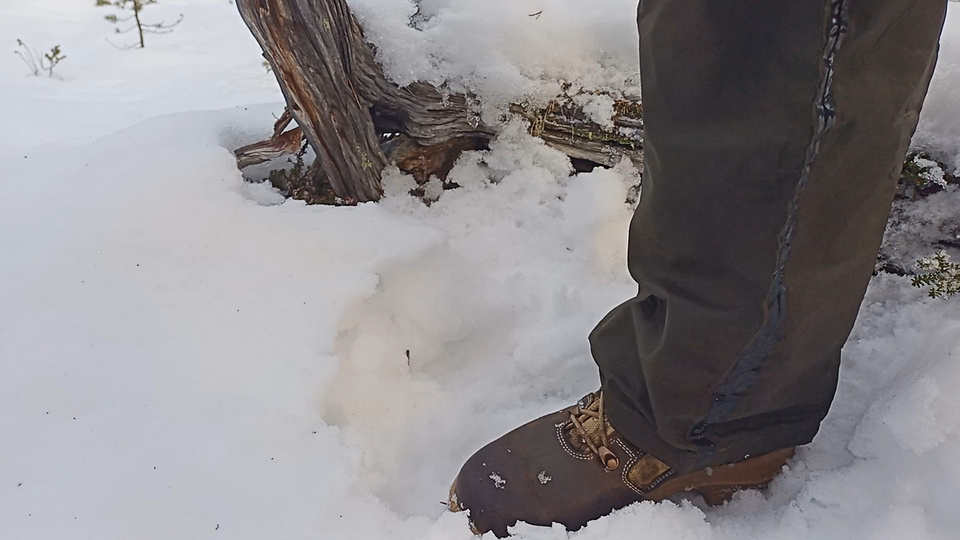
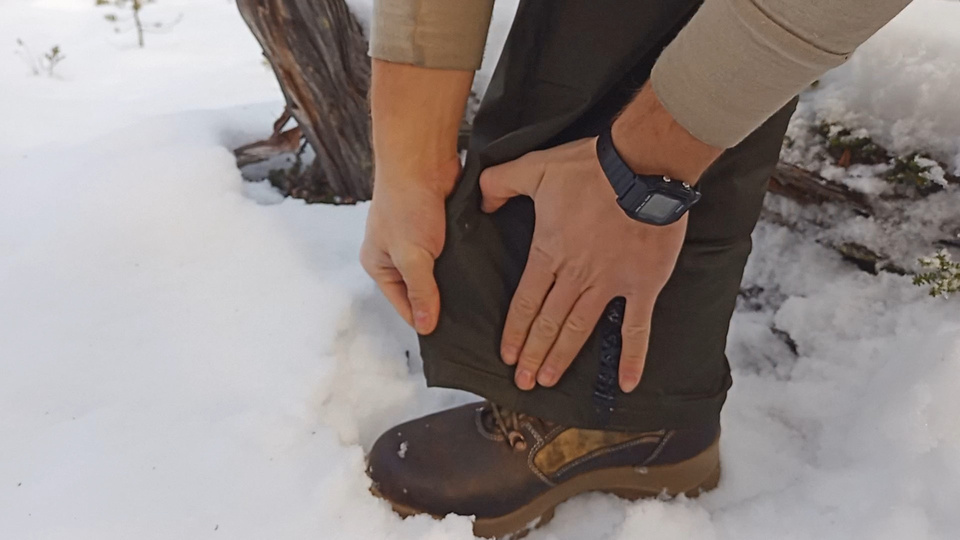
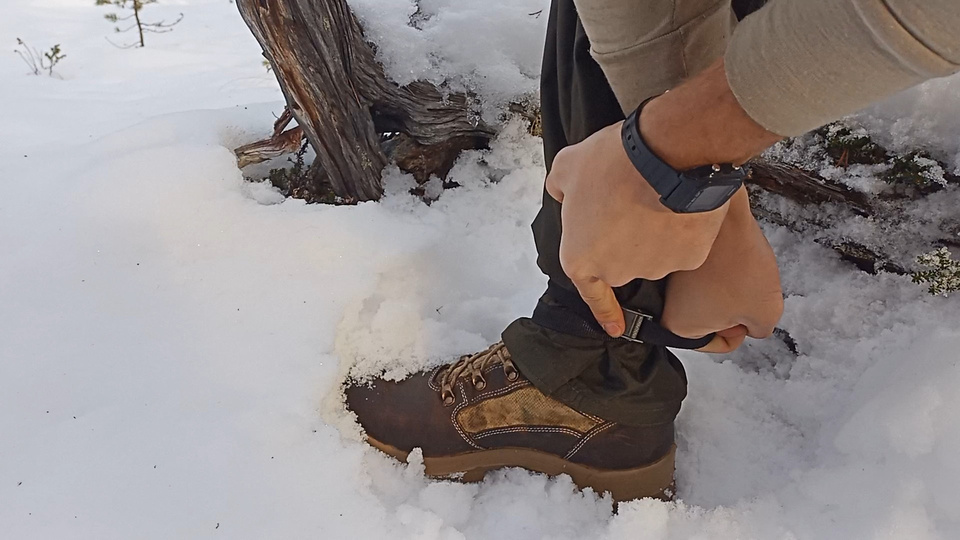
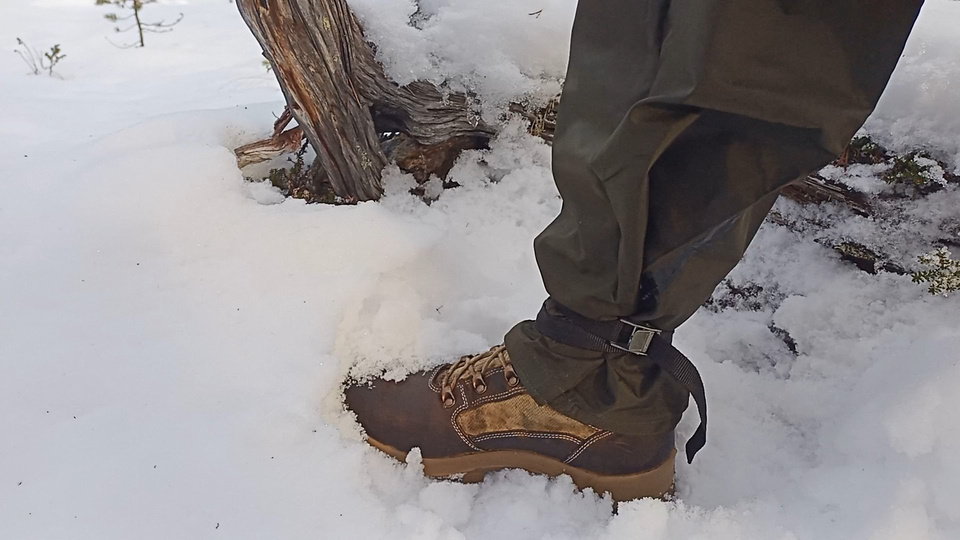
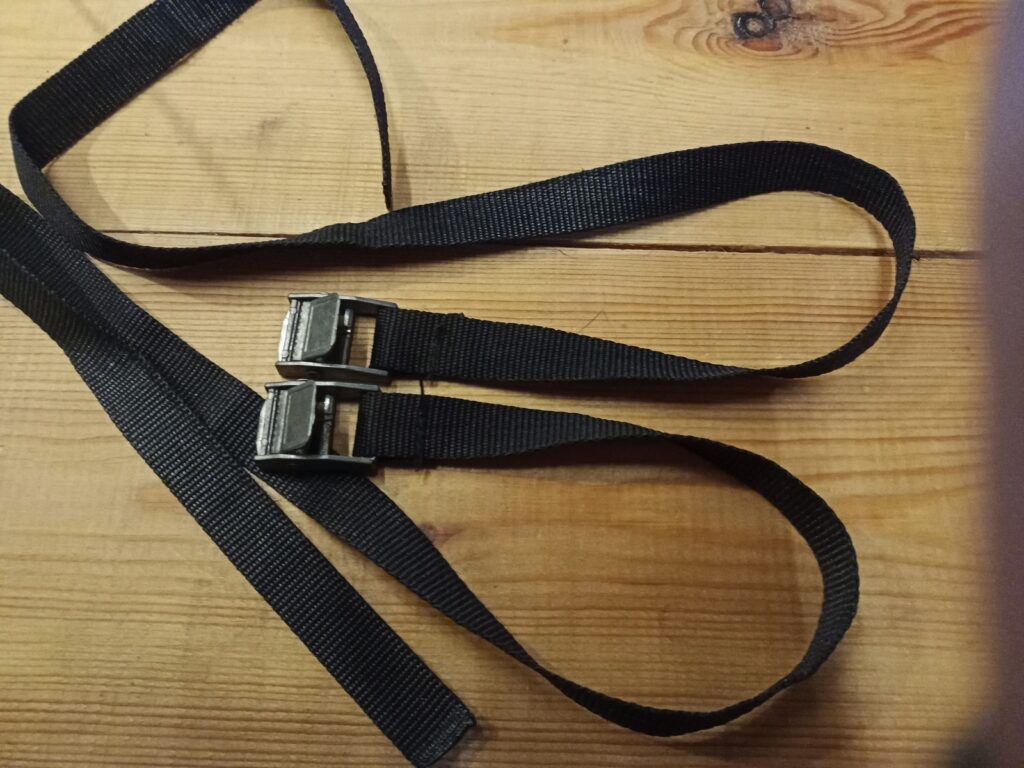
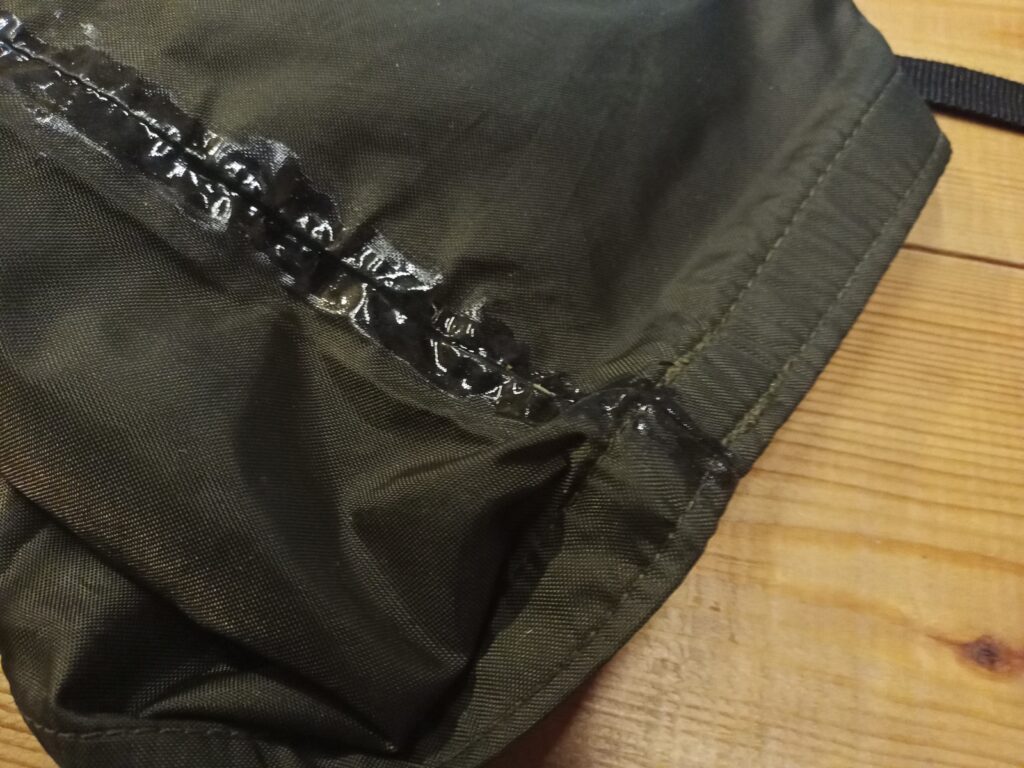
It is good to seal the seems of your chaps with silan connected PU (SMP/hybrid polymere) glue.
Depending on the water pressure you should be fast as water can penetrate also through the coating when the pressure is high. The longer you stay in the water the higher the risk is that it penetrates somewhere through. Practice it at home exactly with the setup you intend to use. Weaker persons can use a tourniquet which makes it easier to apply more force. A self made tourniquet out of a stick, which needs to be fixated with a cord, and a strap works also well.
Method 3: tie watertight trousers around your shoes
Some Nordic watertight membrane trousers have integrated straps you can use to do it. It can be more challenging then with chaps as you need to fold the fabric to the inside. It is more difficult to do that so, that the fabric lies flat. Besides that the buckles of the trousers are normally just plastic and could brake if you use a lot of force. 3 layer trousers are also more stiff, which makes it harder to get them flat and tight. Some models have a thicker PU coating on the leg opening which helps sealing.
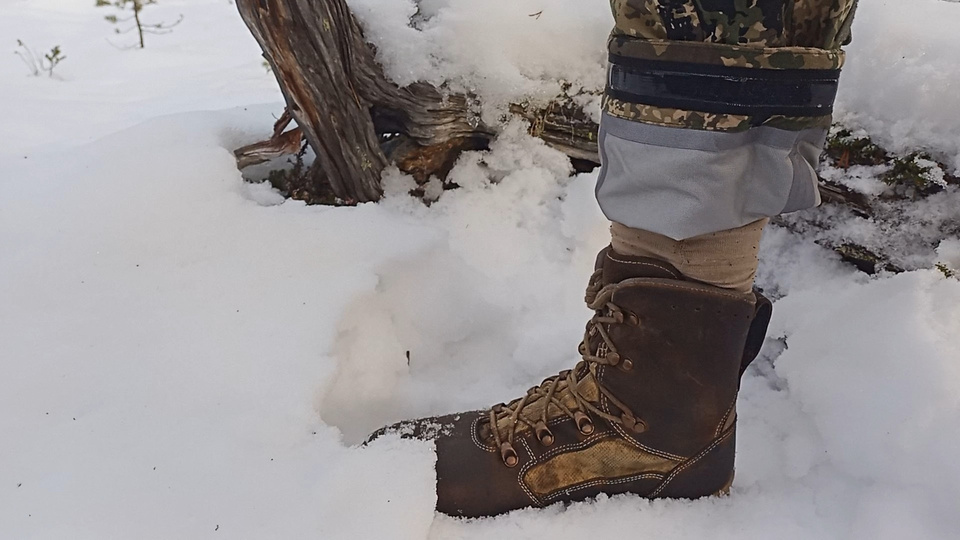
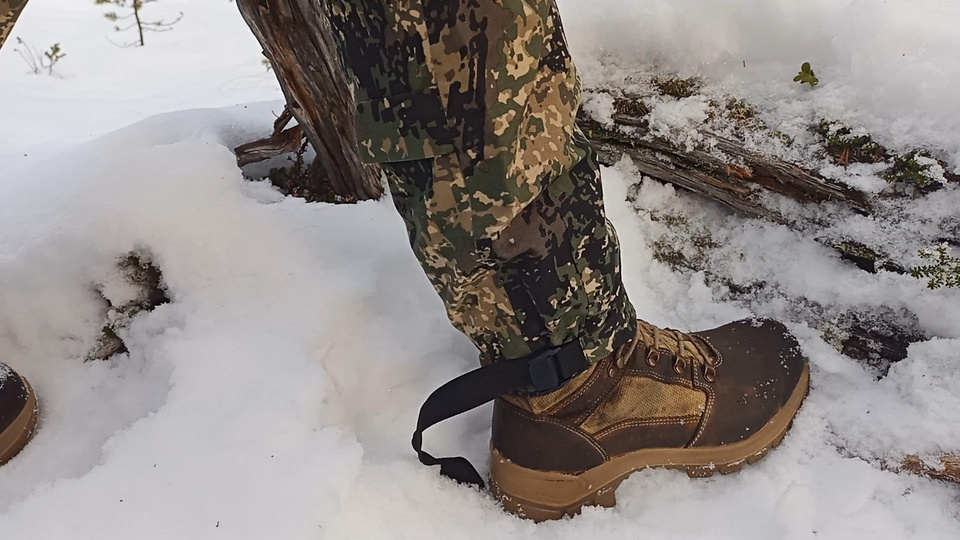
Be careful with ventilation zippers. So called watertight zippers are not really watertight in a stream and when the current pushes against them a considerable amount of water can get inside. So it is better if the water level stays below all zippers and pockets.
I’m carrying the weight of two extra straps to seal the trousers better with the shoes. You should place the extra straps correctly and leave the integrated ones in case. I normally only use the integrated ones if I just need to dip into the water very short and the level is low. Otherwise the integrated ones are great to prevent water or snow getting into your trousers.
